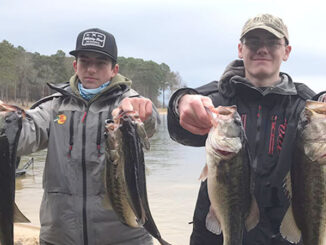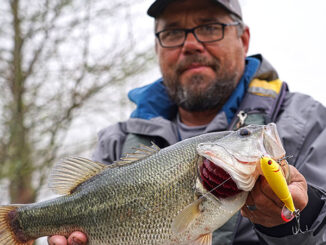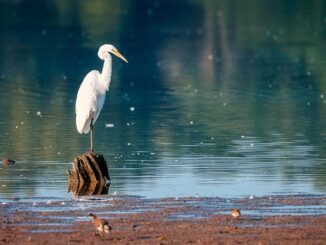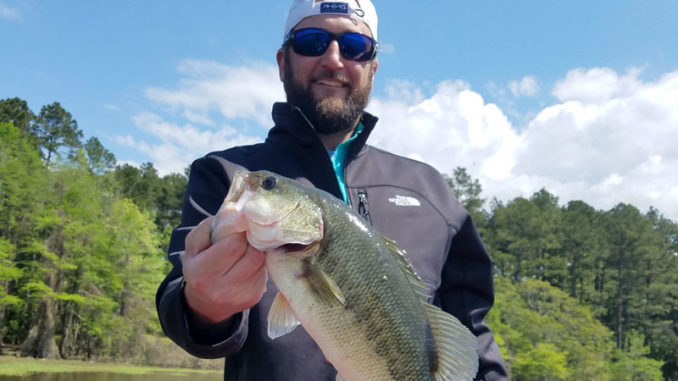
It’s getting to be that time of year to gas up the boat, then idle around Toledo Bend focusing on your electronics to pick out ridges, creeks and drains in deep water — a great way to find and put bass in the boat.
I can’t wait for June, after so many of the bass transition from shallow to mid-range depths to depths of 20 feet or more. I got a sampling earlier this year of the wonders of Garmin Panoptix LiveScope. When the time comes, I’ll look for schools of bass out there where times you can catch them quickly on drop-shots, crankbaits and Carolina-rigged soft plastics.
The bass you find in deeper water seem to be consistently the same size — larger than the ones caught shallower. And while you’re fishing, keep your eyes peeled, particularly over drains where bass push shad to the surface and maul as many as they can in typical schooling action.
All that said, however, successful bass fishermen will still start the day shallow. That’s my first choice until the water gets too hot and/or the baitfish leave the shallows.
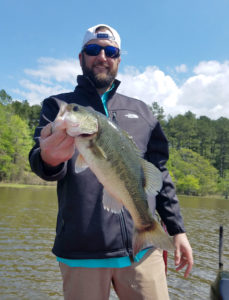
The option of fishing depths of 8 feet or less ought to be a very good one considering how high the lake’s pool stage got in March and April. In February and March, the pool stage was 169 to 170, but by the end of April, it was up to 173.13. We have touched on the possibility that the water might get up in the bushes. Well, it has happened, and there is prime bass cover everywhere in the inundated areas.
One of my favorite spots with flooded cover has given up quality fish and plenty of bass recently. I admit I haven’t been to the Solon’s area in 25 years, but making the latest trips there was rewarding; there was 3½ feet of water around many of the bushes.
Bass are free to move into hard-to-get-at places along the flooded shoreline. As the water falls out, whenever it does, they’ll be positioned on the outside stuff before they leave, which gives anglers easier access to them.
By late May and June, the bass spawn should be played out, with the exception of a few very late spawners. Mostly, bass will be in the post-spawn stage. When it’s time, they will migrate to their early summer and summer haunts, a lot of them in 15- to 20-foot depths. Until then, topwaters (Chug Bugs, Zara Spooks) — including my favorites, plastic frogs like the Top Toad — and bladed jigs like the Delta Lures Thunder Jig are so effective, as well as chartreuse/blue/white or golden bream-colored spinnerbaits. Golden bream is the bullet on this lake.
There are acres of shallow milfoil in drains around the lake; I would target those, too, if possible. It was great to see that lily pads are growing and should be prolific by June. That bodes well, as last year, the plastic frog bite was on in the lily pads, and I had a blast every time I fished them.
I will play that shallow game until something tells me to go find bass in deeper water. That’s where plenty of gas, and the marine electronics come into play as you search for structure holding bass.
Top June colors for soft plastics on drop-shots, Ned rigs, Neco rigs and Carolina rigs are redbug, junebug/red and plum apple. That’s the deal right there, starting with redbug at the top. For crankbaits, choose baitfish colors.
Later on, when the dog days of summer arrive, that early bite’s duration is usually an hour or so first thing in the morning. Then, it’ll be time to head out to deeper stuff.
The water clarity should improve tremendously before June, so it helps to downsize to 10- or 12-pound fluorocarbon on a spinning rig for the drop-shots, Neco rigs and Ned rigs and 12- or 14-pound fluorocarbon for crankbaits. I’m partial to 40-pound test Power Pro green braid for my frogging.
